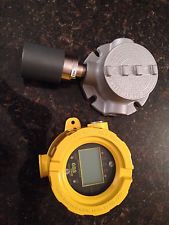Whether it’s a refinery, manufacturing plant, or water treatment plant where high levels of dangerous gases may be present, it’s important to have sensors that are able to alert personnel to danger at a moment’s notice. In these work environments, installing catalyst sensors can be just the answer. Relying on oxygen in the atmosphere to function, these sensors are extremely sensitive to flammable gases such as carbon monoxide or natural gas. Along with this, a catalytic-type gas sensor works by balancing the rise in temperature with the corresponding electrical resistance. While being viewed throughout the industry as extremely reliable, there are nevertheless various pros and cons regarding these sensors.
Economical and Reliable
Because these sensors have a long life and cost very little to replace, they are considered some of the most reliable pieces of equipment any facility can have on its premises. Known for providing very accurate readings even in high temperatures, they are able to be calibrated to detect gases which cannot be detected by infrared sensors.
Harsh Environment Performance
In many situations, a catalyst detector will need to perform well in a very harsh work environment. By not being sensitive to optics, a catalytic bead sensor can thus perform quite well in environments where dust is a primary concern. Along with being resistant to dust, these sensors also perform well in areas where high temperatures and high humidity levels are present.
Degraded Performance
While it’s true a catalyst monitor is for the most part extremely economical and reliable, there are situations where their performance can be degraded. For example, if exposed to concentrated hydrocarbons for long periods of time, these sensors can become damaged. When this occurs, the result is a sensor that shows a very low signal or no signal at all.
Ease of Contamination
Along with the possibility of degraded performance, sensors in this class can also be very prone to contamination. Since the only way to test these sensors is to expose them to known quantities of certain gases, they can become inactive due to contamination. This can happen through exposure to chemicals which contain silicone and chlorine compounds, as well as those which contain sulfuric and corrosive elements.
Proper Positioning
To take full advantage of the monitoring capabilities of these sensors, one of the keys to success involves properly positioning the sensors within your facility. Along with being installed in places where exposure to dust is likely, it’s also imperative to have these sensors in places where they will experience a minimal amount of shocks and vibrations. In addition to possibly damaging sensitive circuitry within the sensor, this could also lead to false readings.
While there are a variety of pros and cons associated with sensors in this class, it’s clear this group of sensors uses technology that has been proven to be very effective in numerous work environments. Whether they are installed on offshore drilling platforms or within manufacturing plants, there’s no doubt that lives can be saved by using these sensors.

